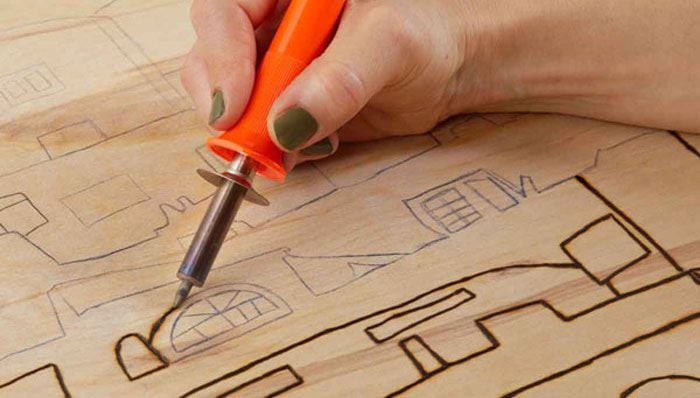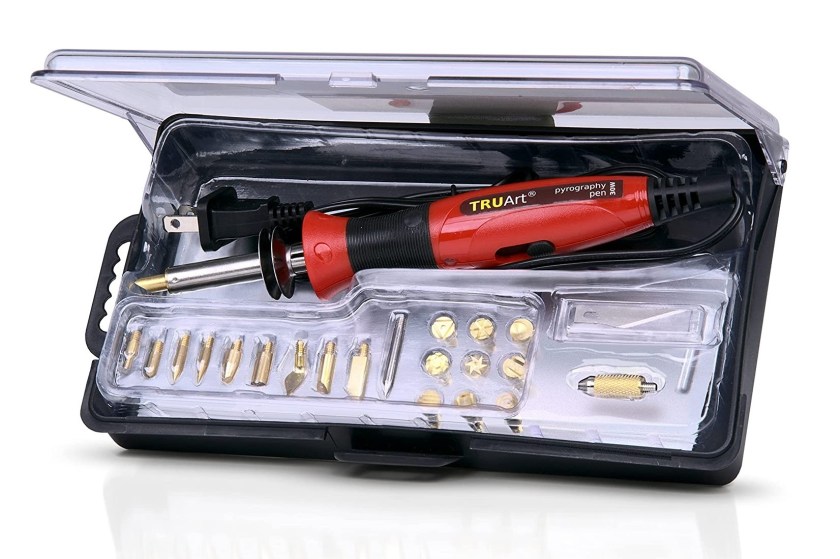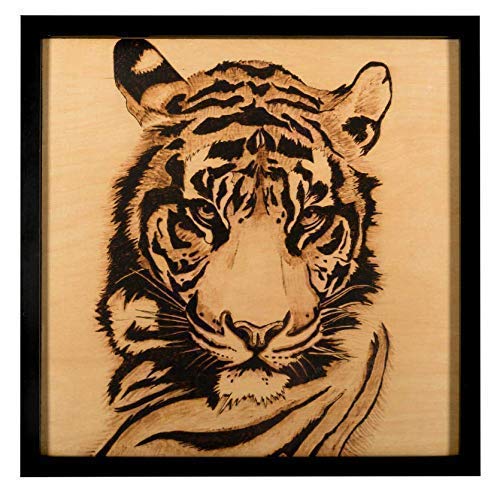
Using a woodburner, you can make a fish out of a piece of wood and then shade it. It can be protected with a clear coat of sealer. Here's how:
How to make a wood burning fish
One of the first steps in woodburning a woodfish is to draw the design onto a smooth piece of wood. Smooth wood is more easy to burn than hard wood, so ensure your woodburning piece is as smooth and even as possible. Then, tape a sheet of tracing paper to the top of the wood and draw a picture of your fish on it with an HB pencil.
To get started, you may wish to make a simple cartoon fish. This design is great for beginners. It can be made in small or large quantities using coloring pages. You can also add some color to the woodburning with a swirling background of watercolor. Watercolor paints are a great medium to brighten the background. Once you're happy with the design, you can put it in a frame.
A whole fish can also be cooked on a wood stove. A whole fish will be more satisfying than a fillet, so make sure to wrap it tightly in foil so it doesn't fall apart while cooking. The size and thickness of your fish, as well as the heat of your wood stove, will affect the cooking time. Depending on how large your fish is, you can cook them for between five and ten minutes. But, keep in mind, that the more you cook it,, the less likely it will burn.
How to shade a wood-burning fish
There are many ways to add shading to wood-burning fish. You can use a white charcoal pencil and draw lines or dots on the tail. These marks can then be burnt away with a wood-burning iron. This technique is great for small areas or for large designs. You can also burn the lake water and fins with a marker pen tip.

Gradient shading can be a great way to make your fish look more real. First, shade the edges of your fish. Then go in and shade any details you've already created. You can make your fish appear more round by shading the areas closest to you, and darker the areas further away. A graduated shading technique can be used to shade your bobber's gills, and bottom.
Pointillism is a more advanced technique. Pointillistic shading creates an exaggerated look. The dots vary in size as well as density giving the fish depth. Tuna is a very popular fish. A woodburning design that depicts a real tuna fish can add lots of detail. Soft shading is another option. Soft shading produces a soft drawing effect. A hard shader tip creates an unremovable rough burn.
How to apply clear varnish to a wood-burning fish
Although mastering the art and technique of pyrography is not difficult, it's important to apply a water-resistant coating. The sealants give your woodburning project a professional appearance by adding a protective layer. What type of stain should you use? To avoid cracking, apply two or three coats of oil. Let each coat dry for at least 15-30 minutes before applying the second coat. A number of coats will form a "shell," which will keep water from getting in.

Apply the clear sealer using a universal tip brush to all parts of the fish. You should leave a small area of the woodburner unplugged before switching to flow point. Apply clear finish to the back of the fish, as well as the edges. The woodburning should be allowed to dry completely before you apply the clear coating.
Apply the clear sealer to your woodburning salmon using the same technique as you used to oil your furniture. Apply the sealer generously to the surface and let it dry. Continue this process if you need to. If the wood absorbs more oil, the finish will be less durable. Clear sealer is recommended if you intend to keep the fish outdoors for long periods of time.
FAQ
Is it easy to start a woodworking business?
It is not easy to start a woodworking business. There are lots of legal requirements and regulations that you'll need to follow. It doesn't mean that you have to go through the entire process of starting a business. Many people prefer to join existing companies. You will only have to pay membership fees, taxes, and other charges.
How much money do you need to get going?
Since every project differs, it is impossible to give exact numbers. These are the factors that will give you an idea of how much you'll need.
-
Material costs
-
Tools and equipment
-
Time spent working on this project
-
Your hourly rate
-
What profit are you expecting to earn?
-
Hire help
Start small, if possible. You can make simple boxes or picture frames if you're just getting started. You'll become more proficient as you get experience.
What's the difference between plywood vs particle board?
Plywood consists of layers made from wood and pressed together by pressure. Plywood comes in several thicknesses and is commonly used for cabinets and flooring. Particle board can be made from sawdust, resin, and then compressed to make large blocks. It's often used for home renovation projects. Both types of boards can be easily cut and are durable.
Statistics
- The U.S. Bureau of Labor Statistics (BLS) estimates that the number of jobs for woodworkers will decline by 4% between 2019 and 2029. (indeed.com)
- The best-paid 10 percent make $76,000, while the lowest-paid 10 percent make $34,000. (zippia.com)
- Overall employment of woodworkers is projected to grow 8 percent from 2020 to 2030, about as fast as the average for all occupations. (bls.gov)
- Average lumber prices rose about 600 percent between April 2020 and May 2021. (familyhandyman.com)
External Links
How To
How to stain wood
Stain wood is a process that involves applying chemicals to the surface of wood, which changes its color. This chemical reaction causes the wood color to change from white and brownish red. Oak is the most commonly used wood for staining, but other woods can also be stained.
There are many ways to stain wood surfaces. One method involves mixing the stain and a solvent and then spraying it on the wood. You can also apply a solution containing water and dye directly to the wooden surface. You can mix stains into varnishes or paints to make them part of your finish coat.
Preparing the surface is the most important step in staining wooden surfaces. Cleaning the wood thoroughly removes any dirt or grease that could interfere with applying the stain. Sanding the wood removes scratches and imperfections. Next, you need to decide which stain you want. There are two types of stains that can be used: penetrating and non-penetrating. Penetrating stains penetrate deeper than non-penetrating stains, which makes them great for dark colors like mahogany. Penetrating stains are best paired with lighter colors, such as maple.
After you've decided what type of stain to apply, get ready for your tools. Because you can spread the stain evenly with a paintbrush, it is ideal for applying them. After you're done painting, make sure to have some rags handy to remove any excess stain. If you plan to mix the stain yourself, make sure you have enough containers available to hold the different components of the mixture.
Once you have prepared your materials, start by cleaning the area where you plan to stain the wood. Use soap and warm water to remove dust and grime. Use a dampened sponge and warm water to clean the entire piece. Be sure to get rid of all loose material, especially if staining is planned for darker wood.
Apply the stain. Start at one end of the piece of furniture and brush or spray the stain onto the wood. Slowly and carefully move along the grain of wood, slowly but steadily, until you reach the other end. Make sure that the stain does not drip off the edge of the wood. Allow the stain to dry completely before you move on to the next step.
Protect the painted surface with a coat polyurethane paint sealant. Apply three coats of polyurethane sealer. Allow the third coat, which should dry overnight, to dry before sanding.